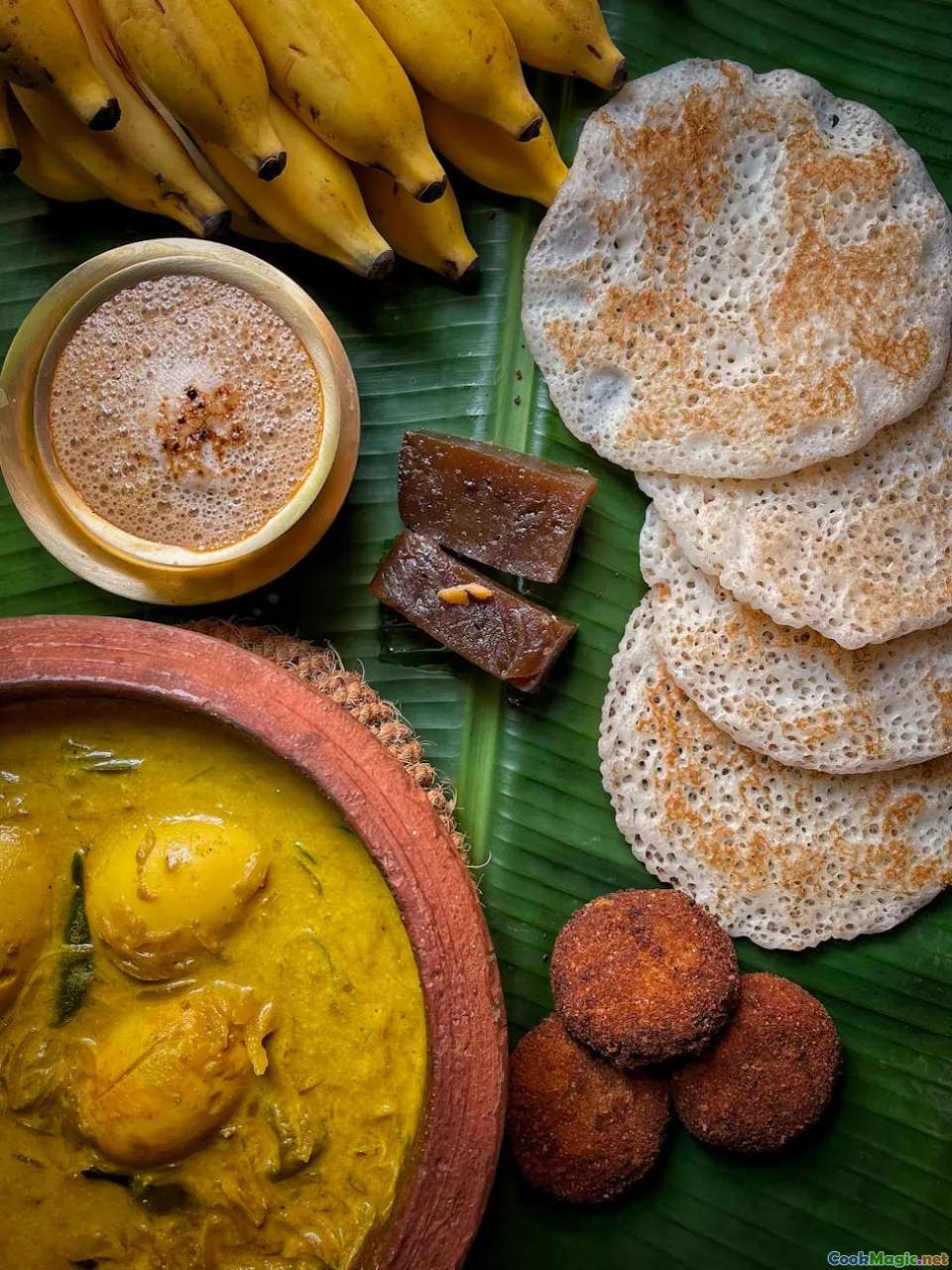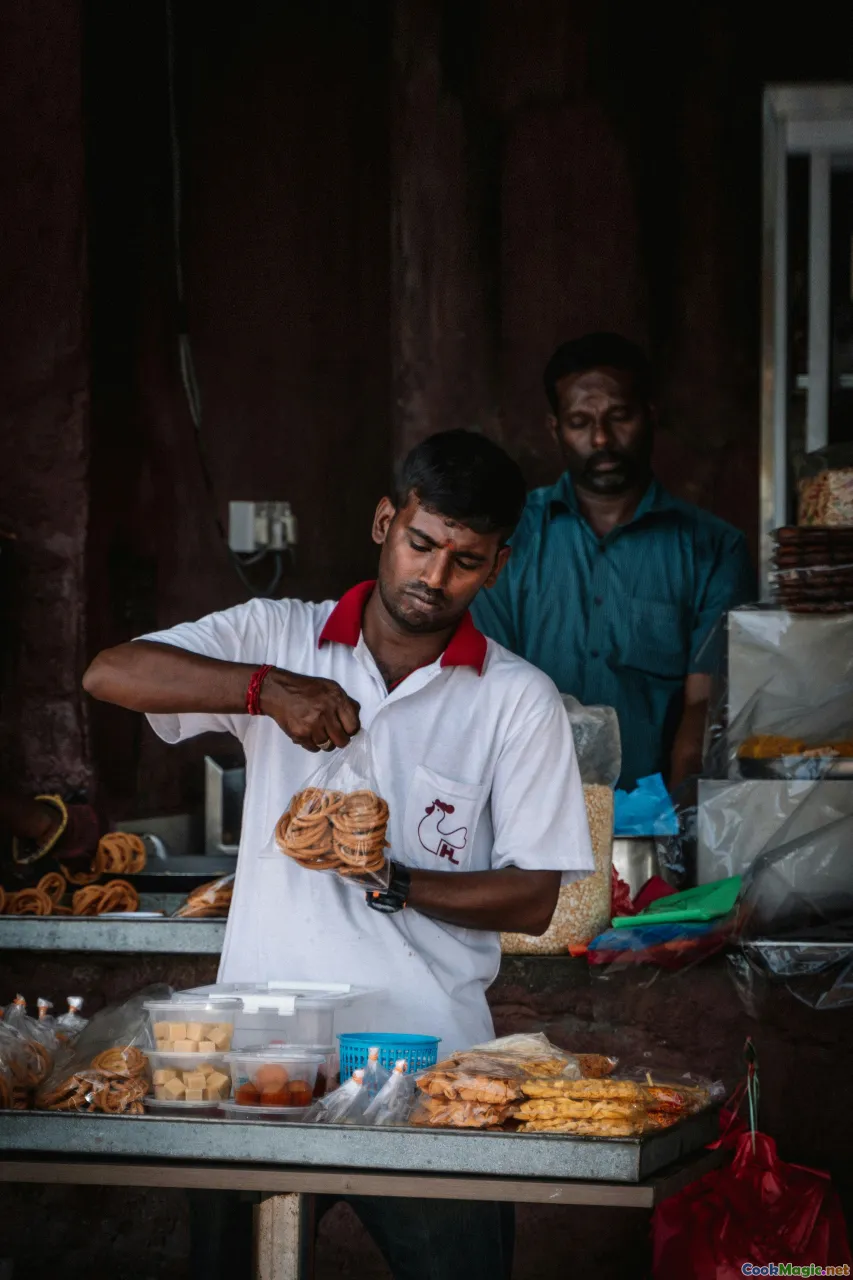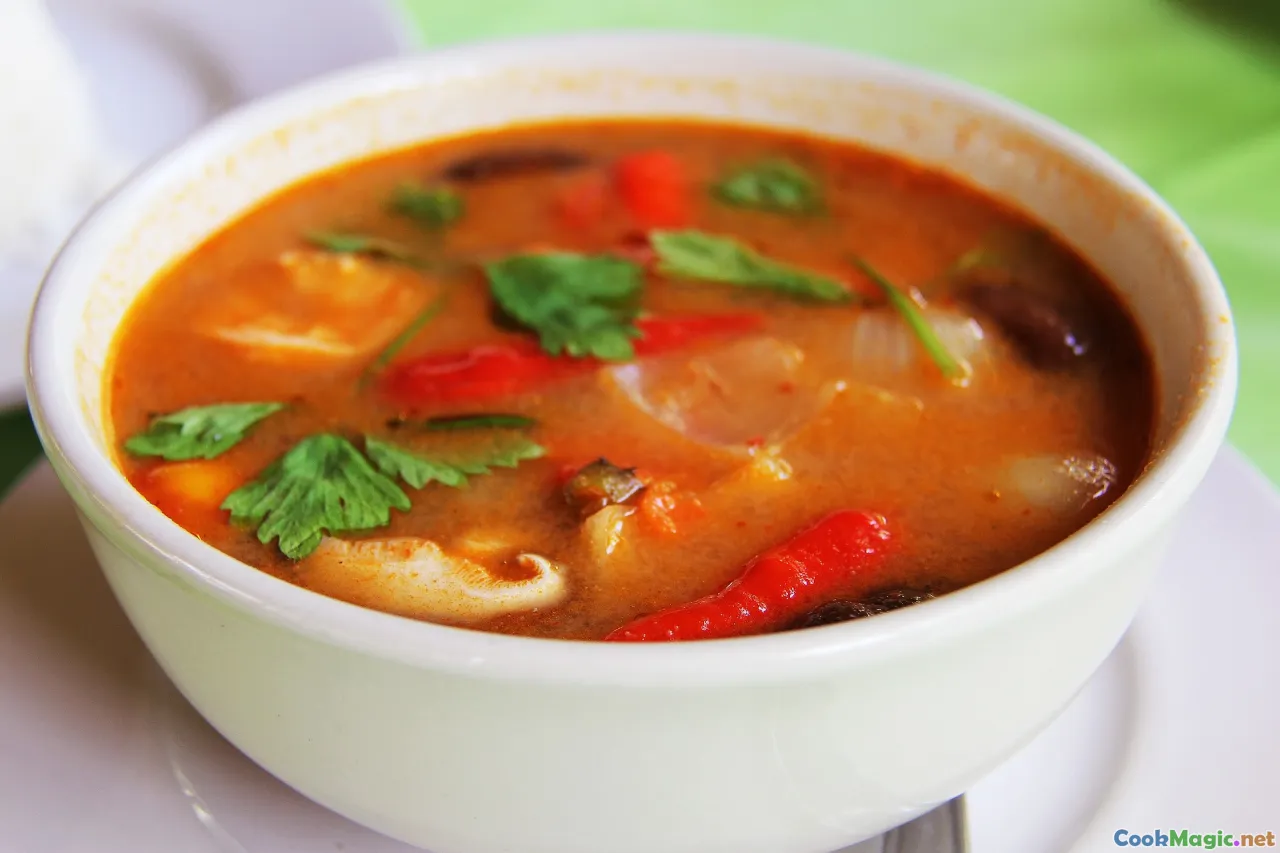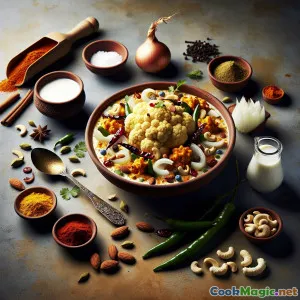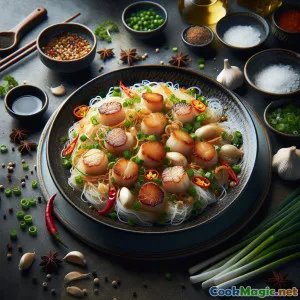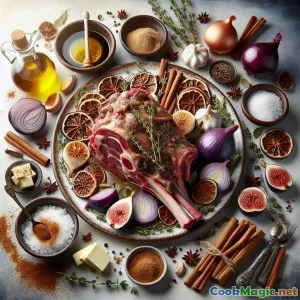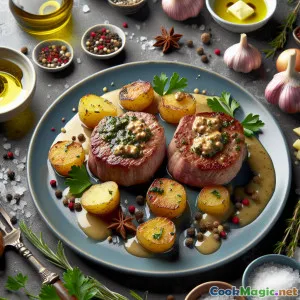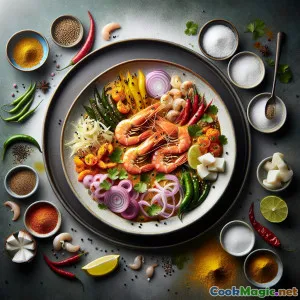
Narkel Chingri : Un curry de crevettes et noix de coco bengali de rêve
(Narkel Chingri: A Dreamy Bengali Coconut Prawn Curry)
(0 Avis)0
1
août 07, 2025
Signaler un problème
Ingrédients
-
350 grams Crevette (moyenne, décortiquée, avec la queue)
(Fresh or frozen; shelled except tail)
-
1 large Oignon rouge
(Haché finement)
-
100 grams Noix de coco râpée fraîche
(Lightly toasted for more aroma)
-
250 ml Lait de coco
(Full fat)
-
1 tsp Graines de moutarde
(Yellow or black)
-
0.5 tsp Graines de Nigella (Kalonji)
(Enhances flavor complexity)
-
2 whole Piment vert
(Slit lengthwise, adjust to taste)
-
2 tsp Pâte de gingembre et d'ail
-
0.5 tsp Poudre de Curcuma
(For color and aroma)
-
0.5 tsp Poudre de Piment Rouge
(Ajuster au goût)
Sel, to taste
-
0.5 tsp Sucre
(Balances flavors; optional)
-
2.5 tbsp Huile de moutarde
(Traditional choice, for earthy flavor)
-
0.5 tbsp Ghee
(For layered richness at finish)
-
2 tbsp Feuilles de coriandre fraîches
(Haché, pour garnir)
(Fresh or frozen; shelled except tail)
(Haché finement)
(Lightly toasted for more aroma)
(Full fat)
(Yellow or black)
(Enhances flavor complexity)
(Slit lengthwise, adjust to taste)
(For color and aroma)
(Ajuster au goût)
(Balances flavors; optional)
(Traditional choice, for earthy flavor)
(For layered richness at finish)
(Haché, pour garnir)
Nutrition
- Portions: 4
- Taille de portion: 1 bol (250g)
- Calories: 520 kcal
- Carbohydrates: 14 g
- Protein: 24 g
- Fat: 40 g
- Fiber: 3 g
- Sugar: 5 g
- Sodium: 860 mg
- Cholesterol: 170 mg
- Calcium: 120 mg
- Iron: 2.6 mg
Instructions
-
1 - Marinate the prawns:
Toss cleaned prawns with a pinch of salt and half the turmeric powder. Set aside for ten minutes while you prep other ingredients.
-
2 - Sauté the Aromatics:
Heat mustard oil in a pan till it smokes. Lower to medium heat, add mustard and nigella seeds; once they splutter, add chopped onions. Sauté till golden.
-
3 - Build the Masala:
Add ginger-garlic paste, stir for a minute, then add rest of turmeric, chili powder, sugar (optional), and green chilies. Cook till spice aroma lifts (about 2 minutes).
-
4 - Create Coconut Harmony:
Stir in the toasted grated coconut. Cook for another two minutes till oils begin to release and mixture comes together.
-
5 - Simmer with coconut milk:
Lower heat and pour in coconut milk slowly. Gently simmer (not boil) the gravy for about five minutes, stirring occasionally for a creamy base.
-
6 - Poach the Prawns:
Slide marinated prawns into the gentle coconut gravy. Cook uncovered till prawns turn opaque and curl up (about 6-8 minutes). Don’t overcook to keep seafood tender.
-
7 - Final Touch & Serve:
Taste and adjust salt, swirl in ghee if using, and garnish with coriander leaves. Serve in a moon-white bowl for fairytale effects.
Toss cleaned prawns with a pinch of salt and half the turmeric powder. Set aside for ten minutes while you prep other ingredients.
Heat mustard oil in a pan till it smokes. Lower to medium heat, add mustard and nigella seeds; once they splutter, add chopped onions. Sauté till golden.
Add ginger-garlic paste, stir for a minute, then add rest of turmeric, chili powder, sugar (optional), and green chilies. Cook till spice aroma lifts (about 2 minutes).
Stir in the toasted grated coconut. Cook for another two minutes till oils begin to release and mixture comes together.
Lower heat and pour in coconut milk slowly. Gently simmer (not boil) the gravy for about five minutes, stirring occasionally for a creamy base.
Slide marinated prawns into the gentle coconut gravy. Cook uncovered till prawns turn opaque and curl up (about 6-8 minutes). Don’t overcook to keep seafood tender.
Taste and adjust salt, swirl in ghee if using, and garnish with coriander leaves. Serve in a moon-white bowl for fairytale effects.
En savoir plus sur: Narkel Chingri : Un curry de crevettes et noix de coco bengali de rêve
'Narkel Chingri Fairytale': The Splendor of Bengal
Few dishes conjure sensory charm the way 'Narkel Chingri Fairytale' does. Rooted deeply in the coastal tapestry of Bengal, this dreamy prawn and coconut curry is more than just a recipe—it's a story, a journey, and a celebration of tradition with a whisper of modern magic.
A Taste Steeped in History
Bengal—legendary for its fertile river deltas—is a treasure trove of both freshwater and brine-rich seafood. Prawns, locally called chingri, have played a prominent part in festival spreads, marriages, and everyday lunches since ancient times. Coconut, the yielding tropical nut, weaves through the folklore and flavors of both east and south. Their union in this curry is nothing less than poetry for the senses—a harmony between mild sweetness and mellow, briny succulence invoking riverside tales and monsoon lore.
Culturally, the Bengali kitchen is famed for its use of mustard oil, tempering with bursting nigella and mustard seeds, and balanced plays of heat and hyper-local produce. This curry is traditionally cooked during grand feasts, panchami pujas, and, in recent decades, as an elevated homestyle treat for special guests. Modern iterations—inspired by diaspora creativity and global access to ingredients—swap in premium prawns (often imported), ready coconut milk, and richer ghee garnishes。
Unique Techniques & Personal Connections
A standout in this recipe is its emphasis on both coconut flesh and coconut milk: toasting the fresh gratings transforms the nutty base, enhancing depth and caramelized flavor—a rare step outside of classic versions and my own twist to dial up flavor complexity. Nigella (kalonji) in the tempering, though optional in many households, sparks the aroma and infuses a hint of sultry darkness reminiscent of storytelling evenings by lantern or candlelight.
Cooking seafood requires delicacy. Bengali cooks will tell you: the prawn must curl, but not shrink; its charm lies in tender opacity, never a rubbery bite. Take care in the final minutes, watching as your prawns waltz from blush translucent to regal pinkish white—a transformation worthy of superstar treatment.
Serving and Accompaniments
'Narkel Chingri' is best with fragrant white rice, such as steamy gobindobhog or subtle basmati, which sips up the creamy, sweet-hot gravy. For ultimate authenticity, try serving it in a coconut shell or pale, elegant bowls topped with a few delicate strands of fresh coriander.
To elevate celebratory meals, a dash of ghee right before serving floats atop the curry: this little flourish picks up coconut's richness and whispers against the tang of acrid mustard oil—creating layer upon layer of beguiling flavor.
Tips & Tricks
- Always temper the mustard oil till smoke so bitterness abates.
- Fresh coconut adds body, but if unavailable, use rehydrated unsweetened coconut with care.
- Don’t rush the simmer; gentle heat draws maximum flavor from spices and coconut milk.
- For a light, summery effect, skip the sugar and up the chilies; for comfort, add the sweet touch.
- If making ahead, reheat on very low heat to prevent splitting the coconut base.
Personal Reflections
Even those new to Bengali cuisine are swept away by the sheer elegance and comfort of this curry. Each bite captures the landscape it hails from—rivers, glinting paddy fields, sultry afternoons, monsoon romance, and warmly lit kitchens full of community spirit. For me, preparing 'Narkel Chingri Fairytale' is a ritual in itself; grinding spices, gently stirring, aromatic clouds wafting through the room—a reminder that cooking, like storytelling, is the kindness we pass to ourselves and others.
Create this recipe with patience and serve it with joy. After all, culinary fairytales are best enjoyed slowly, in delightful company, with many stories yet to tell.

